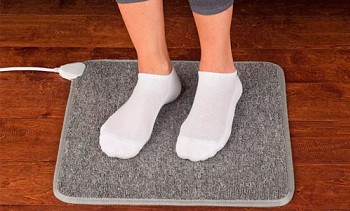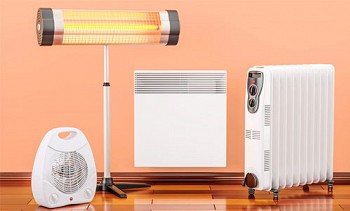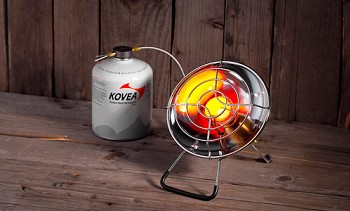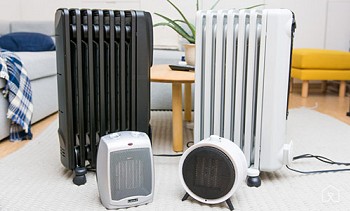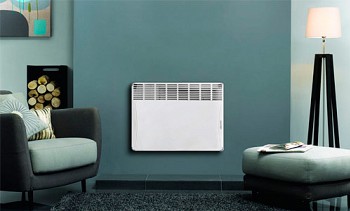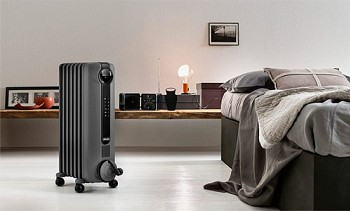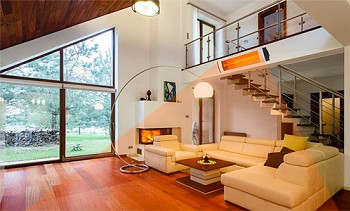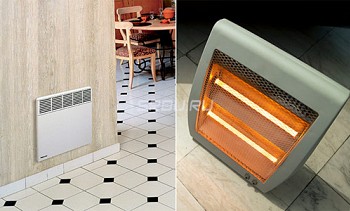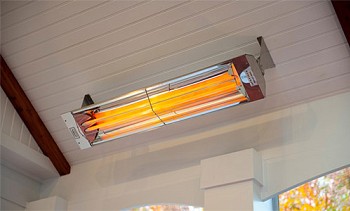Heaters using infrared radiation are becoming more and more popular every year. Using them is convenient and safe, and also economical. Is this so, try to figure it out. And consider in detail infrared heaters, the benefits and harms of which are not yet well covered in the press and on the Internet.
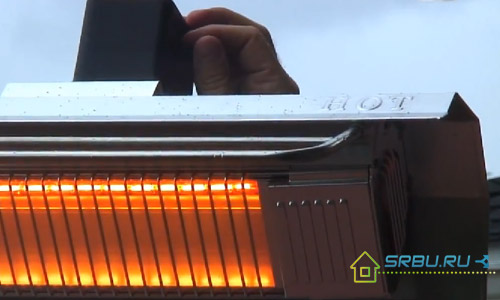
Content:
Infrared radiation - what is it?
Conclusions about the harmfulness of this radiation can only be made if you understand what it is. In principle, any heater emits infrared rays, but the wavelength and intensity are different. Therefore, it will be incorrect to compare the IR radiation of a conventional cast-iron battery and an infrared heater.
Infrared radiation refers to electromagnetic radiation. Its natural source is the sun. It is nice to feel the touch of warm sunshine on your skin, but being exposed to them for too long can be harmful. In principle, the negative and positive effect of this radiation is determined by the degree of its penetration deep into the skin.
One of the main advantages of infrared heaters is that they transfer energy to their destination with virtually no loss. The surface of objects exposed to infrared radiation is heated the more, the higher the temperature of the heater itself. After all, with increasing heating, more and more short waves appear in the spectrum. Namely, they most of all heat the surfaces that are facing them. And if the heater during operation primarily provides only short-wave radiation, then we have to talk not about the benefits, but only about the dangers of infrared heaters.
Depending on what the wavelength is, and also to what temperature the heating element is heated, infrared heaters are divided into three types:
- Heaters emitting long waves (from 50 to 200 microns) are heated to 300 degrees Celsius.
- Heaters emitting medium waves (from 2.5 to 50 microns) are heated up to 600 degrees.
- Heaters emitting short waves (from 0.7 to 2.5 microns) are heated most strongly - over 800 degrees.
Depending on the degree of penetration into the depths of human skin, the entire range of the spectrum of infrared waves can be divided into three parts:
- IR-A - waves with a length of 0.76 to 1.5 microns. They are able to penetrate deeply enough under the skin - up to four centimeters.
- IR-B is a wavelength range of 1.5 to 3 microns. Their degree of penetration under the skin is medium.
- IR-C - waves longer than 3 microns. They do not pass further than the uppermost skin layers (from 0.1 to 0.2 microns), being completely absorbed by them.
Radiation from a heating element consists of short, long and medium waves. It’s just that some of them are more in the spectrum, while others are fewer. The higher the heating temperature, the more short waves appear in this spectrum. But not all manufacturers of infrared heaters talk about this. Here is an example of the dependence of wavelengths on the temperature of the heating element given by one of the honest manufacturers of infrared heaters.
| Source temperature 0FROM | Wavelength, microns | Power, W / m2 |
|---|---|---|
| 255 | 6,80 | 150 |
| 354 | 5,40 | 250 |
| 354 | 4,90 | 300 |
| 452 | 4,50 | 400 |
| 468 | 4,15 | 500 |
| 553 | 3,85 | 650 |
| 602 | 3,60 | 750 |
| 685 | 3,15 | 1000 |
Take for example a human body that has a temperature of 36.6 degrees. The maximum energy emitted by it comes from waves with a length of 9.6 microns. An infrared heater with a ceramic element emits as much as possible at a wavelength of 3.6 microns, and a temperature of 600 degrees. The sun, on the other hand, has the greatest radiation in the visible part of the spectrum at a wavelength of 0.5 microns.
From this it becomes clear that our body can easily accept thermal waves with a length of more than 9.6 microns. Looking at the passport of a heater produced by a reliable company, you can find the range of emitted waves in it. As a rule, it is either from 2 (or from 3) to 10 microns.
The main advantage of infrared heaters - instant energy transfer - is due precisely to the influence of short and medium waves. The stronger the radiator heats up, the more short waves appear in the spectrum. As a result, the surface to be heated will become warm much faster than when using, for example, a convector-type heating device, which should heat all the air in the room.

The principle of operation of a convector heater.
If you had a fireplace or an electric reflector, then you know that it’s warm to sit next to them, but you need to move close enough to the device. And the heat from them goes only in one direction. It is like sitting by the fire. Having throttled, and you can overheat, having received harm from infrared heaters instead of benefit. Therefore, the manufacturers of these devices are trying to soften the radiation.
The emissivity, also called the degree of blackness, determines its intensity. If you heat a completely black object strongly, the radiation from it will be the most severe. The intensity of the rays from an element located in a ceramic case is somewhat reduced. Soften radiation and reflectors mounted in the device.
So: on the basis of exposure to infrared rays, you can make an excellent device that will not have a negative impact on the human body and is very mediocre.
What is harmful in infrared heaters
1. IR radiation, long enough acting on our skin, overdries it. Moisture evaporates from the skin, it heats up very quickly (and only its upper layer), and sweat does not have time to form. Therefore, on the side of the body that is facing the heater, a burn may appear. This can happen if the appliance is installed in a room.
2. Studies studying the effect of infrared rays on people have been going on for quite some time. For therapeutic purposes, this radiation is used in physiotherapeutic procedures limited in time. But the production, in which such radiation is constantly present, is considered harmful.
Skin that is not protected by clothing, under the strong influence of infrared rays, can undergo internal changes. In proteins, denaturation processes begin, cell membranes lose their permeability, as a result of which changes occur in blood cells. The retina and lens can be burned, and then there is a risk of cataracts. Remembering the health hazards of infrared heaters, you must adhere to certain standards when using them.
3. If in the room to fix the IR heater on the ceiling, and low enough, it will constantly heat the scalp. Therefore, if you really want to buy a ceiling heater, hang it higher. And direct it in such a way as not to be constantly under its rays. And in a room for sleeping or in the nursery it is not at all worth using such devices.

If you can’t do without it, then choose a low-power device, and direct the radiating side to walls, floors or furniture.
Is there any benefit from infrared rays
Natural radiation of the infrared type - waves with a length of 7 to 14 microns. The maximum intensity is given by waves with a length of 10 microns. As for the human body, it is capable of emitting waves from 3 to 50 microns. The maximum again falls on waves with a length of 10 microns (more precisely, 9.6 microns). With these parameters, a person is most susceptible to infrared radiation.
Such a medical procedure as “warming up” is based on the body’s ability to respond to a specific infrared wavelength. It is used to restore and maintain the body in good shape.It should be borne in mind that you can not be exposed to short infrared waves for a long time - this is harmful.
If we talk about long infrared waves, we can only note their benefits. They not only have a very positive effect on the functioning of the human body, but they can also increase immunity. But there is absolutely no harm from them. When buying an IR heater, you must definitely familiarize yourself with its technical data, an article will help you make a competent choice of an IR heater:How to choose infrared heaters - the principle of operation, device and important selection criteria.

We can conclude that the effectiveness of infrared heaters is really at their best. They can bring considerable benefits in those places where we are not for long. This, for example, a balcony, gazebo, corridor, utility room. Moreover, the heat from such a device remains for a long time - because it simultaneously heats the floor, walls, and furniture.

